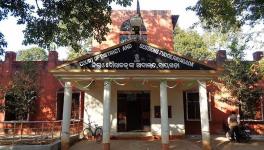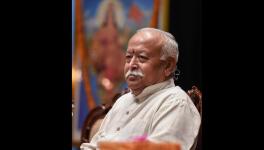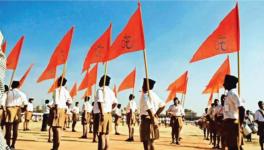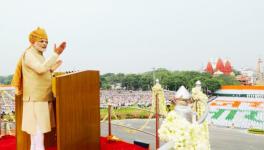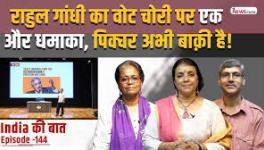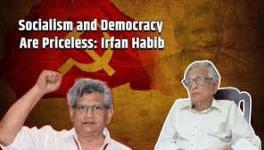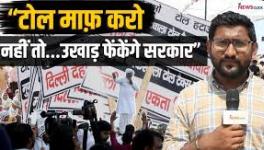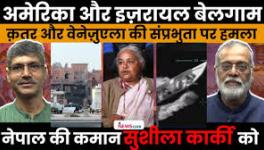RSS Chief’s New Formulation on Caste is Old Wine in New Bottle
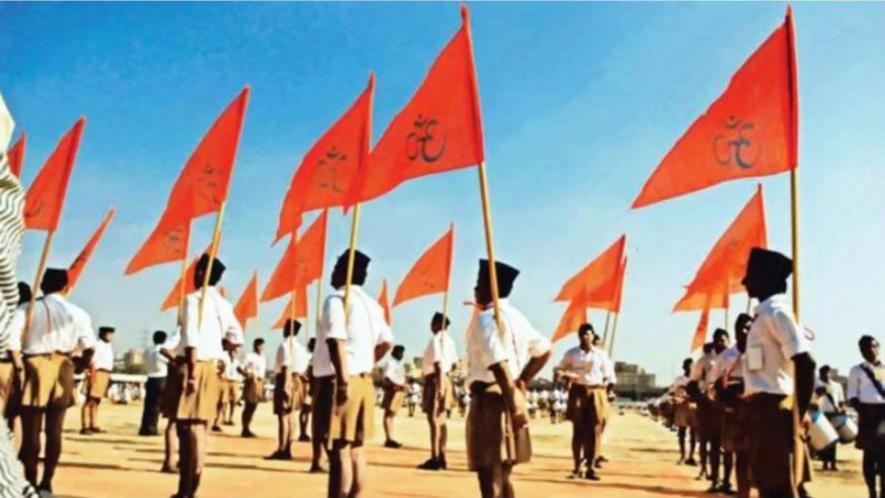
File Photo
“I exist in all beings. Whatever their name or colour, all have the same ability and deserve the same respect. All are my own. No one is superior or inferior based on the scriptures. What the pandits say is a lie. We have lost our way by getting entangled in this imagination of superior and inferior castes. This delusion has to be done away with.” These are the words of Mohan Bhagwat, the sarsanghchalak or chief of the Rashtriya Swayamsevak Sangh, the parent organisation of the Bharatiya Janata Party and numerous other organisations working to turn India into a Hindu nation. He was talking on the occasion of Saint Ravidas Jayanti.
Swami Prasad Maurya, a leader of backward classes in Uttar Pradesh, latched on to Bhagwat’s remarks and re-emphasised his call to revise Tulsidas’s Ramcharitmanas, which has passages that belittle the Dalits and women. On the other end of this debate, the conservative Shankaracharya and others defended the caste system, calling it god-created and saying Bhagwat should not blame Brahmins. To save face, the RSS finally sought to clarify that by “Pandit”, he means scholars and not members of Brahmin castes.
In the entire controversy, we can find the Hindu nationalist stable’s attempts to woo the Dalits and other excluded sections of Indian society. The RSS has been in a constant dilemma on this front. On the one hand, it wants to maintain the pre-modern status quo regarding caste and gender. But it also wants to win over these sections to gain the numbers that can back its political and social agendas. It is in this light that we can look at the changing statements from the top echelons of the RSS regarding caste over the years.
Recall that one factor that prompted the formation of the RSS was the struggle of downtrodden sections to break the shackles of landlord-Brahmins. The Non-Brahmin Movement, which started in the pre-colonial movement, contested the hierarchical caste-based order and demanded equality and justice. Movements of this nature became a significant factor that prompted the social and caste elites to band together and form the RSS and other such outfits.
The initial position of the RSS was articulated by its second chief, Madhav Sadashiv Golwalkar. He upheld the Varna-caste system and eulogised the Manusmriti. His book, We or Our Nationhood Defined, portrayed the past as a golden era. For him, the holy scripture was this book, and it defended the caste system as based on “scientific” principles. Organiser, the unofficial RSS mouthpiece, presented it in these words on 1 December 1952: “If a developed society realises that the existing differences are due to the “scientific” social structure and that they indicate the different limbs of the body social, the diversity [i.e., the caste system] would not be construed as a blemish.”
Later, another RSS ideologue, Deendayal Upadhyay, also a president of the BJP, put forward the ‘integral humanism’ construct. Many from the Sangh Parivar say integral humanism guides their politics. As per Upadhyay’s book, Integral Humanism, “In our concept of four castes [Varna system], they are thought of as different limbs of Virat Purush [Primeval Man]. These limbs complement one another, and even further, there is individuality and unity. There is a complete identity of interests, identity, and belonging. If this idea is not kept alive, caste can produce conflict instead of being complimentary. But then that is a distortion.”
These articulations consolidated the base of the politics of the RSS-BJP among sections of the Hindu population. When the RSS felt these ideas had been adequately established, it began propagating that all castes are equal. In this direction as well, they published three books. Written by RSS ideologues, these texts argue that Islamic atrocities during the medieval period resulted in the emergence of untouchability and lower castes. These books are “Hindu Charmakar Jati”, “Hindu Khatik Jati”, and “Hindu Valmiki Jati”.
Sangh Parivar leaders claimed these castes came into existence due to atrocities by so-called foreign invaders and did not exist in the Hindu religion earlier. According to the RSS leader Suresh Bhaiyyaji Joshi, “Islamic atrocities” in the medieval era led to the emergence of untouchability. He also said, “To violate Hindu swabhiman [pride] of the Chanwarvanshiya Kshatriyas, foreign invaders from Arab, Muslim rulers and beef-eaters, forced them to do abominable works like killing cows, skinning them and throwing their carcasses in deserted places. Foreign invaders thus created a caste of charm-karma (dealing with skin) by giving such works as punishment to proud Hindu prisoners.”
What we see and hear now is the newest phase, wherein the caste system is being blamed on “Pandits”. The foundations of the caste system are ancient, and untouchability accompanies this system. The Aryans considered themselves superior, called the non-Aryans krshna varnya or dark-skinned; anasa (those with no nose), and deemed them non-human or amanushya [Rig Veda: X.22.9]. There are statements in the Rig Veda and Manusmriti that show the lower-caste members were prohibited from coming near higher castes and had to live outside the village.
While this does not imply that a full-fledged caste system as we saw later had already come into being in Rig-Vedic times, the four-fold division of society into Varnas did exist, and it became a fairly rigid caste system by the time of the Manusmriti, written in the second–third centuries AD.
Untouchability became the accompaniment of the caste system sometime around the first century AD. The Manusmriti codified the existing practices, clearly showing the despicable social rules the oppressor castes had imposed on the oppressed castes.
After consolidating its base, the RSS now wants to win over more sections, especially the Dalit and backward classes, to suit its agenda. It had set up the Samajik Samrasta Manch or Social Harmony Forum to work among the Dalits and backwards, and the Vanvasi Kalyan Ashram to co-opt the Adivasis. Their well-spread-out network has helped them make inroads into these sections for decades, yielding rich electoral dividends to its offshoot, the BJP, apart from trying to make these sections join the Hindutva fold. Their work revolves around promoting Brahmanical religiosity and Seva or service.
As electoral politics becomes more challenging, with the deprivations and exclusions faced by the downtrodden sections becoming more evident in the RSS agenda, it needs a new formulation for how caste originated. They can rewrite the origins of caste as their core constituency is consolidated. It appears that such utterances as Bhagwat’s will not shake its existing support, allowing it to adopt a new language to win over the members of non-elite social groups.
The author is a human rights activist and taught at IIT Bombay. The views are personal.
Get the latest reports & analysis with people's perspective on Protests, movements & deep analytical videos, discussions of the current affairs in your Telegram app. Subscribe to NewsClick's Telegram channel & get Real-Time updates on stories, as they get published on our website.













